Digital Helping Hands - the after sales scam?
The computer imaging and design market is unlike any other in its attitude
to marketing. Once your name is known to a vendor, you'll be bombarded
with offers of upgrades and bolt-on extensions to the good you have
already bought. You will receive demonstration CD-ROM disks, limited
period expiry trial versions of new programs, and offers which have a
closing date to qualify for a special price.
In fact, the special price is usually a myth. I'm glad that one big
company failed to process my application for three upgrades to a certain
program we use every day to design magazines, at £150 per serial number -
we survived, and six months later the price is down to £99. It was more
like a limited period introductory HIGH price offer!
Recently I have spent well over £500 on special software offers, two
purchased from a DTP Resource CD-ROM issued by Monotype Systems but
including software mainly from the Adobe stable. The advertising blurb and
specification description was persuasive - here was one package, called
ArtScan, which promised to drive most popular desktop scanners to ultimate
quality and replace clunky Photoshop plug-ins; here was a complete set of
CMYK conversions from Kodak, to give us control over ink densities on our
pages.
The total cost of these two was around £180, unlocked off the CD-ROM disc
instantly - Monotype were very efficient, and took my credit card details
in exchange for de-encryption codes over the phone.
Artless scans
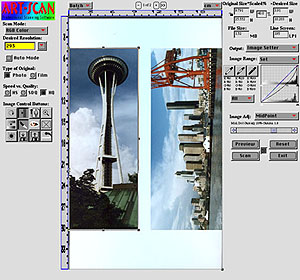 The ArtScan package has so far proved entirely useless. Despite having
Microtek, Apple, Agfa and Sharp drivers in the demo package the only
scanner it works with is our Nikon Scantouch, which already has a much
faster and better plug-in. It won't run the Microtek Scanmaker III, did
not work with our Sharp JX-600 because it was a GPIB connected model
instead of SCSI, failed to recognise an Agfa Focus Colour Plus, and
assumes all Apple scanners are greyscale only and were made before 1992.
The ArtScan package has so far proved entirely useless. Despite having
Microtek, Apple, Agfa and Sharp drivers in the demo package the only
scanner it works with is our Nikon Scantouch, which already has a much
faster and better plug-in. It won't run the Microtek Scanmaker III, did
not work with our Sharp JX-600 because it was a GPIB connected model
instead of SCSI, failed to recognise an Agfa Focus Colour Plus, and
assumes all Apple scanners are greyscale only and were made before 1992.
When it does run, ArtScan is complex, memory-hungry, slow and hard to
control. The majority of scanners it supports are makes common in the USA
two to three years ago - it does't provide the vital upgrade to older
commonly-found scanners like the Sharp and Agfa, and fails to drive brand
new models any better than the much improved plug-ins now issued by
Microtek, Umax and others.
A month or two later, we purchased three Apple Colour OneScanner units at
the knock-down price of £190 each. What we didn't realise is that these
otherwise excellent Hewlett-Packard based single pass colour scanners come
with no Photoshop plug-in available. Instead, a supposedly superior
scanning package called Ofoto 2.0 is bundled - another of those programs
you can also buy separately to run many other types of scanner.
Ofoto is slow, cumbersome, loaded with bells and whistles but lacking
simple direct control. It certainly works, and does many things which a
Photoshop plug-in rarely offers, but impedes productivity in the process.
Then we remembered the ArtScan plug-in. Surely that package - which had
proved to have no use in a studio full of different scanners - would be
bound to drive the Color OneScanner properly?
Unfortunately, ArtScan was not able to recognise the 'Colour' bit and
added insult by identifying most colour photographs as line art when set
to its automatic mode.
There is only one scanning program which we have used and tested which
consistently adds real speed and functionality to everyday scanners, and
that is Cirrus from the German software house Canto (marketed by Computers
Unlimited). The earlier versions, without ColorSync and complex
auto-sensing of modes and image areas, are in some ways superior to the
later versions. If you turn off all the extras, and use the latest version
in a purely manual mode, you get photographic quality control of scan
input without interference from some programmer's half-baked idea of how
colours should really be reproduced.
Cirrus really does run all those oddball scanners - Rollei Scanbacks,
Sharp A3 scanners, Ricoh, Seimens, Agfa Focus, early Microtek, you name
it. As each version is released they also seem able to add new models
swiftly. It will operate as a Photoshop or XPress plug-in, but one or two
of its better functions are removed in this mode, and in practice it is
best operated as a stand-alone program with the benefit of multiple scan
frames.
POST PROCESSING
The second purchase from Monotype's disc was a set of Kodak Color
Management System profiles for European printing inks, at £69. This
controls how the images look on our pages - but we had just accepted the
standard EuroScala Matchprint setting.
After a month of experiment, we're back on that standard setting - all
the £69 did was to produce some variations to existing colours, with
unpredictable results, and insert these conversions into new PageMaker
documents. I'm sure the profiles have some practical use, but as is so
often the case they could not improve on something which was apparently
right to start with.
This is one of the main reasons why bolt-on programs, enhancements,
plug-ins and miracle cures are rarely worth buying. Generally, you would
need to have a specific common failing present in your digital
photographic work before considering buying a program designed to correct
flawed scan files. People who find it impossible to get decent colours
from their Photo-CD images may find the Kodak CMS profiles extremely
valuable - but our scans are generally well corrected straight off the
scanner, as a result of setting the correct white point, black point, and
contrast (gamma) curve. These three settings are all that a scanner of
decent quality should need to produce perfect results.
Still, along came the Adobe Shop catalogue, and in it was a special
bundle from Extensis, a company specialising in add-ons and plug-ins. One
of the packages on offer, PageTools for PageMaker, offered one function we
desperately needed - the ability to assign a typestyle from a menu to a
single character or word. The normal "Style" menu alters entire paragraphs
at a time, but for typesetting catalogues, tables and forms it is worth
spending £99 on a package of enhancements just to get character-level
style commands.
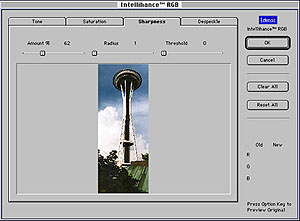 The same company offered Intellihance, a Photoshop plug-in which uses a
single before-and-after comparison screen and some adjustable alogrithms
to post-process scanned images in a single operation. Despeckling,
sharpening, colour saturation boost, white and black points, and tone
scale adjustments are all handled in a single fairly fast action and the
plug-in has automatic presets for beginners, plus full manual control for
experts.
The same company offered Intellihance, a Photoshop plug-in which uses a
single before-and-after comparison screen and some adjustable alogrithms
to post-process scanned images in a single operation. Despeckling,
sharpening, colour saturation boost, white and black points, and tone
scale adjustments are all handled in a single fairly fast action and the
plug-in has automatic presets for beginners, plus full manual control for
experts.
This was another £99. Still, for buy these two, and we could have a
third plug-in kit, this time for Adobe Illustrator. Another £200 wings its
way out of the accounts, and a very slim package containing all three
arrives. Bright readers will understand that we just paid the price of a
full program for a few bolt-on bits - but that is how this after-market
postal vending works.
PageTools is not really within the scope of Photon's coverage. Suffice it
to say that it eats a little extra screen space, and has far too many
icon-click boxes for shortcuts which were already tackled better by
keystrokes. Hidden within this cumbersome overcrowding of repeated
features from the main PageMaker program are two or three critically
valuable functions missing from the original program. It does however
increase the frequency of PageMaker crashes, specifically when using
Printer Styles.
Intellihance is a different matter. If your scans or digital pictures are
good to start with, it can do little to improve them. But... in the case of
our Agfa Focus Colour Plus scanner, now fairly old and with idiosyncratic
results from slides, it can transform raw scans into very well corrected
work. Intellihance therefore went to Andy's Mac and now gets used
regularly. It would not be of any use on our LeafScan or Nikon scanner
systems, because the results from these higher-end and more modern
scanners are finely tuned to start with.
As for the Illustrator add-on pack - well, we have to have Illustrator,
but anyone who bought this program thinking they could do something simple
like draw the outline of a cogwheel for an engineering client would be
disappointed. Illustrator is the most uselessly dysfunctional yet
indispensable program. It is almost impossible to draw any diagram quickly
or intuitively in Illustrator. Every package of plug-ins I have so far
bought for Illustrator has caused repeated crashes so we haven't even
bothered to load up the Extensis one we have paid for.
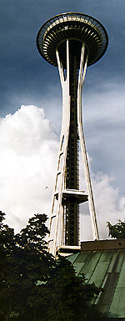
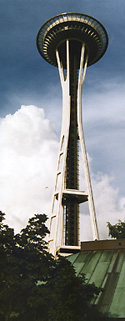
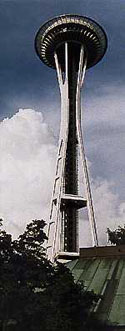 Left: Nikon Scantouch, standard plug-in.
Left: Nikon Scantouch, standard plug-in.
Centre: Raw Nikon scan, with Intellihance.
Right: Using Artscan plug-in.
CRASH COURSES
Over the past few years, I've probably spent £1,000 on postal offers of
miracle software cures. I have fonts which fail to print, optical
character reading packages which take an hour to interpret a page, clip
art from the archives of the Tolpuddle Gazette and numerous £49 American
Mac and PC 'programs' which would have been better described as shareware
with a price on its head - something the authors deserved instead!
I have tried the other end of the market, expensive colour scan
correction software like Cachet, Color Quartet, Binuscan, Monaco Color and
CoCo. Without exception I have found them superfluous to requirements; if
the scan or digital picture data is poor to start with, no program can
actually add missing data, all it can do is redistribute tones and
interpolate values. This is no substitute for correct scanning to start
with, and that depends on having a photographer's insight into what
highlights, midtones and shadows should look like. As none of these
programs actually measures a pre-scan and sends adjusted commands to the
scanner - they all let the scanner run 'raw' then analyse and rework the
resulting scan - they don't tackle the problem of getting better quality
at its source. They are like printing programs designed to deal with poor
negatives, when we all know that the solution is to make a good neg.
My final comment is that nearly all the bolt-on, plug-in, extension
software I have bought or tried has been one version behind the latest
release of its host program or OS. They all tend to increase the frequency
of crashes and hangs, and these can be so frustrating that you end up
removing your new purchase a month after installing it. You may, however,
find one of these small programs does answer a vital need - and how else
can you find out, unless you buy them and use them?
Return to Photon August 96 contents
 The same company offered Intellihance, a Photoshop plug-in which uses a
single before-and-after comparison screen and some adjustable alogrithms
to post-process scanned images in a single operation. Despeckling,
sharpening, colour saturation boost, white and black points, and tone
scale adjustments are all handled in a single fairly fast action and the
plug-in has automatic presets for beginners, plus full manual control for
experts.
The same company offered Intellihance, a Photoshop plug-in which uses a
single before-and-after comparison screen and some adjustable alogrithms
to post-process scanned images in a single operation. Despeckling,
sharpening, colour saturation boost, white and black points, and tone
scale adjustments are all handled in a single fairly fast action and the
plug-in has automatic presets for beginners, plus full manual control for
experts. The ArtScan package has so far proved entirely useless. Despite having
Microtek, Apple, Agfa and Sharp drivers in the demo package the only
scanner it works with is our Nikon Scantouch, which already has a much
faster and better plug-in. It won't run the Microtek Scanmaker III, did
not work with our Sharp JX-600 because it was a GPIB connected model
instead of SCSI, failed to recognise an Agfa Focus Colour Plus, and
assumes all Apple scanners are greyscale only and were made before 1992.
The ArtScan package has so far proved entirely useless. Despite having
Microtek, Apple, Agfa and Sharp drivers in the demo package the only
scanner it works with is our Nikon Scantouch, which already has a much
faster and better plug-in. It won't run the Microtek Scanmaker III, did
not work with our Sharp JX-600 because it was a GPIB connected model
instead of SCSI, failed to recognise an Agfa Focus Colour Plus, and
assumes all Apple scanners are greyscale only and were made before 1992.

